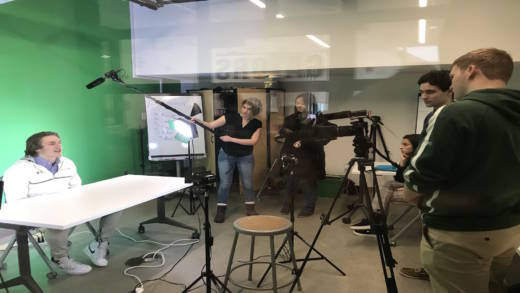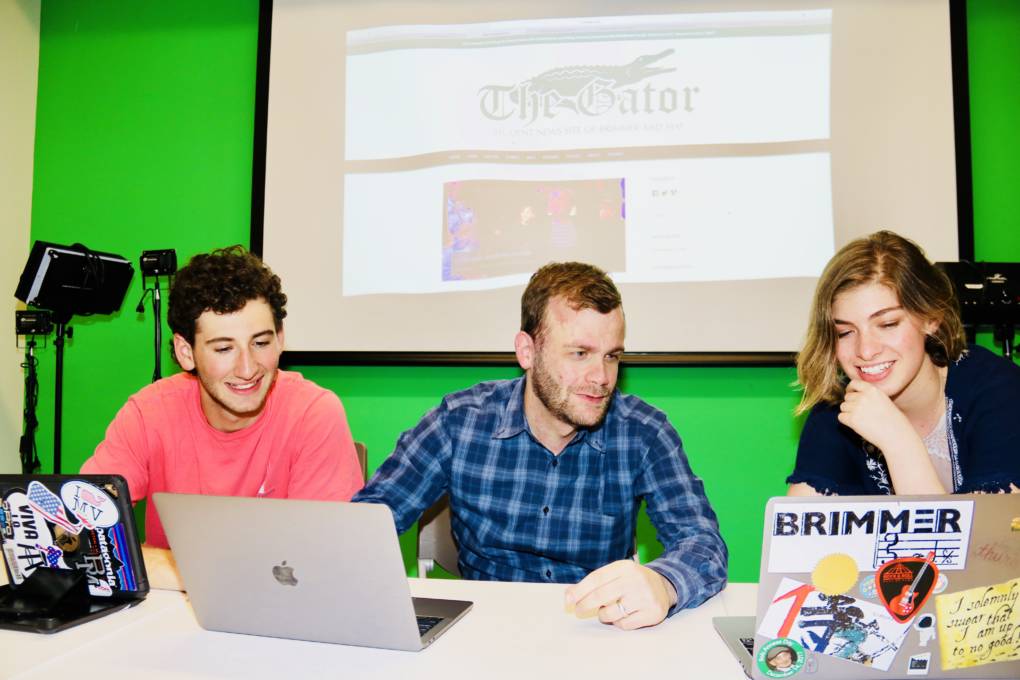The longer I teach online journalism, the more I understand about how students learn best. They crave ownership of the learning process, and that ownership can help promote mastery of essential skills and content knowledge. Owning their learning is also significantly more meaningful than having me—or any other teacher for that matter—tell students exactly what’s expected of them.
I prefer that students experiment with the learning, setting and holding themselves to their own high standards, while always striving to improve.
This fall I gleefully watched my journalism students launch a television news broadcast to accompany The Gator, the online student newspaper I advise at Brimmer and May. I marveled at how access to exciting communication technology, when coupled with an eagerness to share quality work, generated powerful student-driven learning.
Admittedly, as a veteran of print journalism, I knew very little about video production. I had experimented with it earlier, but I fumbled by not initially trusting my students to do the work themselves.
Sure, the final product looked good enough. But it reflected more of my efforts than that of my students, highlighting my shortcoming as an adviser. From the third broadcast onward, as much as possible, I removed myself from the equation. From the sidelines, I observed my students relying on each other to work through roadblocks to produce better and better segments, as they recognized and learned from missteps.

 [/media-credit]
[/media-credit]